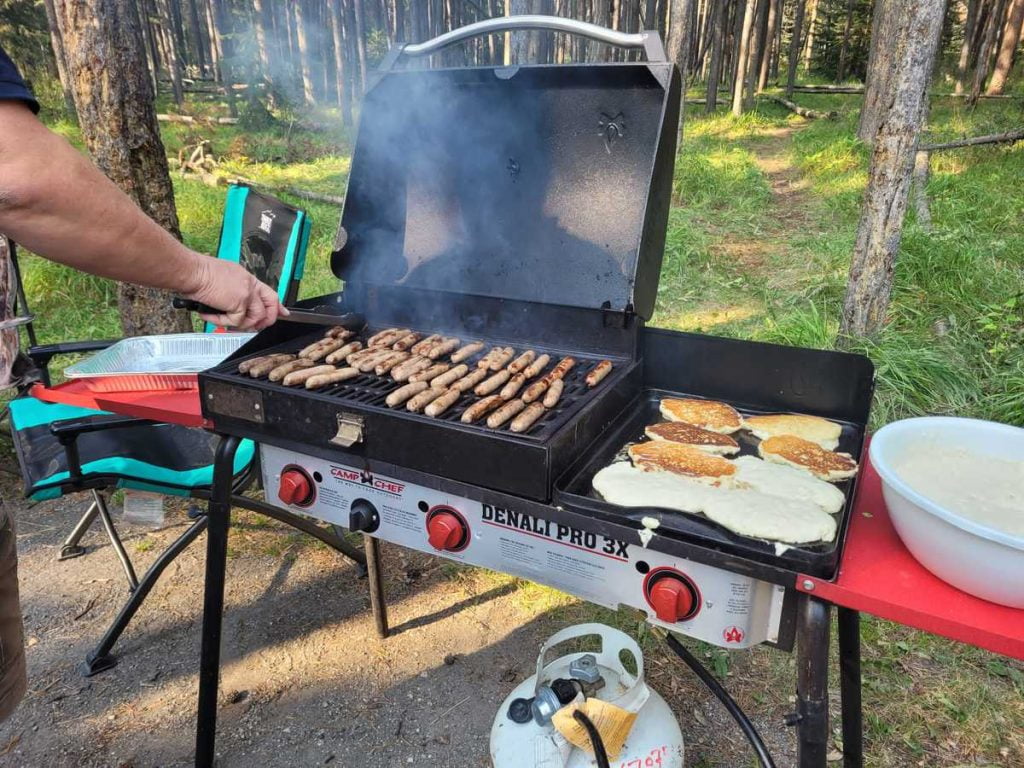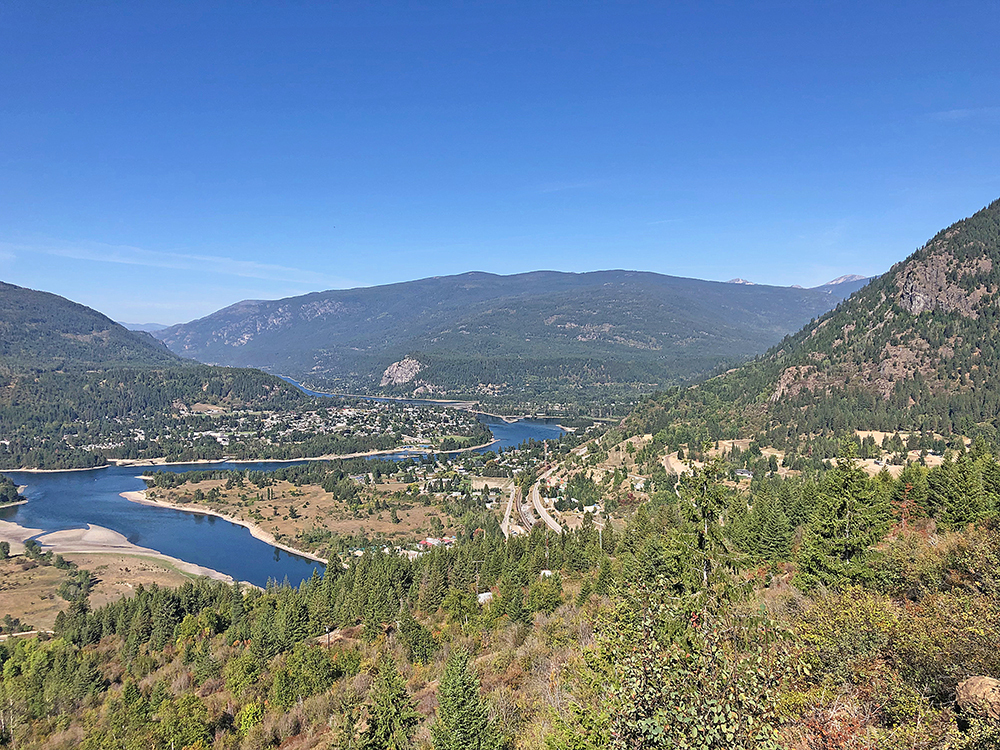With the United States finally opening to cross-border traffic, many RVers are going to be heading south this winter. That means hours and hours of driving on interstate highways heading to warmer climates. As sure as the snow will disappear as you head south, so too is the realization that you’ll have be sharing the roads with thousands of trucks.
Truck traffic is a reality in every season, on long trips or short, north or south – and because of this, I like to revisit my thoughts on how to share the road with heavy trucks while towing your RV (or driving your motorhome).
At an RV show several years ago, where I was speaking, I asked my audience what it was about sharing the road with trucks they disliked. The most common answer was “they just scare me; I never know what they are going to do”.
Now this answer wasn’t unexpected, trucks are intimidating; I get that. However, as I drove tractor-trailers for several years – I have insights from the other side of that steering wheel and I’d like to share them with all RVers in the hopes of educating on how to share the road with trucks and giving some relief from the stress they may cause you.
First, consider that as RVers, we share a similar set of road manners with trucks. We both have large vehicles with considerable weight that we must move as smoothly, efficiently and safely as possible. Now, consider that a large tractor-trailer can weigh (loaded) upwards of 100,000 lb.
Rather than seeing this as a frightening figure, let’s visualize it. Think of a calm elephant, slowly lumbering about its business. An elephant, which can be frightening because of its size, certainly doesn’t come across that way because of its movements. It walks slowly, steadily and with a measured easy gait.
A tractor-trailer behaves much the same way. The driver is trained to make planned, slow movements. Of course, there are some poor/bad truck drivers, but we need to consider the majority – who are professionals. The driver will always try to keep a steady speed and stay in the same lane – they will also accelerate steadily and brake gently. That much weight demands it. If you make a habit of watching trucks while you are on the highway, you’ll notice that you can almost predict a trucks movement in traffic.
How to Share the Road with Trucks:
Consider these two scenarios that often frighten RVers.
First, you’re on a multi-lane highway in the centre or left lane approaching a cloverleaf intersection. A truck is forward and to your right. Suddenly the truck signals left and pulls into your lane, causing you to slow as you approach it. Why did he do that? The truck driver saw that there was traffic about to enter the highway from the on-ramp at the cloverleaf ahead. By moving to the centre lane, a kilometre before the ramp, he avoided having to brake suddenly or make a sudden lane change as they reached the merging traffic.
Now with this understanding, you too can look ahead to that distant merge lane and anticipate the movements of the trucks around you. For that matter, if you are in that right lane, moving to the centre before an interchange is just good road management.
My second scenario is the reverse of the same situation. The traffic is too heavy for the truck to move over safely before the cloverleaf, so instead he adjusts his speed to allow merging traffic to enter ahead of him. He may drop between five and ten km/h, so the following traffic also must slow. If you can see this situation coming into play, you also can reduce speed and avoid having to brake hard. If the on-ramp traffic is also heavy and they can’t move over, most trucks will maintain a steady speed through and past the on-ramp merge lane.
For the motorist entering traffic, there are few more intimidating sights than an eight-foot-tall radiator bearing down on him. But the merging motorist should consider their part in this traffic ballet. Knowing that the trucks speed remains constant – the motorist can quickly gauge whether they have the time (and distance) to accelerate ahead of the truck – or to drop speed and slip in behind. A heavy truck maintaining a steady speed is the safest thing for it to do for all the traffic around it.
If you are the one merging, you should calculate where you will enter traffic while still negotiating the on-ramp and if you’re the one on the highway, do the same by looking far ahead and giving all vehicles the room they need to merge safely.
What else should you know about trucks? Here are some tips to help you when you have to share the road with big trucks.
- When you come to a stop behind a truck, keep to the left of your lane so the driver can see you in their side mirror. Remember if you can’t see the driver’s mirror, they can’t see you. Always stop far enough back to allow for the truck to roll. When a truck is forced to stop on an upgrade he may roll back. Also remember they may have a very heavy load and it will take them a while to get going. By leaving space it will also be much easier to change lanes and pass them.
- Never tailgate, particularly trucks. Driving behind a truck is like having a sheet of plywood strapped to your hood. Your view is almost totally blocked and your only source of information about what’s happening up ahead is the trucks brake lights. Stay back – then if you can pass safely – do so. If not, stay far back enough that you can see more than the truck’s trailer doors.
- When you do pass, don’t pull back in front of a truck without leaving enough room. Trucks can’t stop on a dime and you might be the cause of a jackknife or your own accident. Once you have decided to pass and see that the way is clear, don’t hesitate. Declare your intention to pass by signalling and follow through quickly and safely. Before re-entering the lane, wait until you see both headlights in your rear-view mirror. This will ensure you are an adequate distance away from the truck. Lastly, be sure you maintain your speed when you are in front of a truck.
- When a truck is backing up – anywhere – stay away from it. Even though they have very large mirrors, there are all kinds of blind spots during a backing maneuver. Be patient and never cross behind it or pass anywhere within the arc of a backing truck.
- Trucks turn differently than cars. The rear wheels of the trailer tend to cut the arc of a turn shorter than the steering wheels. That’s why you’ve seen trailers climb curbs. The only way to avoid this is to exaggerate turns, by either moving to the left before turning right or by driving very far into an intersection and then turning into a wide left/right turn. Sometimes as the truck moves left, a narrow lane is created to its right. Many a car has run up on the right side of the truck just as it starts its turn – and the car gets “squeezed”. Be patient – always pay close attention to truck turn signals.
- The centre lane on a multi-lane highway is the trucker’s passing lane. On major roadways, transport trucks are not allowed in the high speed (far left) lane. That means they rely on the centre lane to pass slower traffic. If you travel in the centre lane, be aware of trucks attempting to pass each other.
- Another common gripe with trucks has to do with hills. They speed up and slow down. A truck following you downhill will gain speed; it has no choice because of the weight it’s carrying. A driver avoids braking because they know that speed will scrub off as it climbs the next hill. This is how trucks manage their road speed. What’s interesting is that RVers (particularly with bigger rigs) have the same problem. Not only do they get pushed going downhill, they need that extra speed to climb the next one. The alternative is to brake on the way down and then crawl up the next hill with their four-way hazard lights flashing. This is one-time RVers and truckers should agree wholeheartedly – braking and crawling are bad for the rig. Be aware of the trucks around you and know that on the downhill you will have to accelerate or move over.
- Lastly, always keep a large space cushion around your RV.
Understanding how to share the road with trucks and the space they need helps keep everyone safe on the road.




